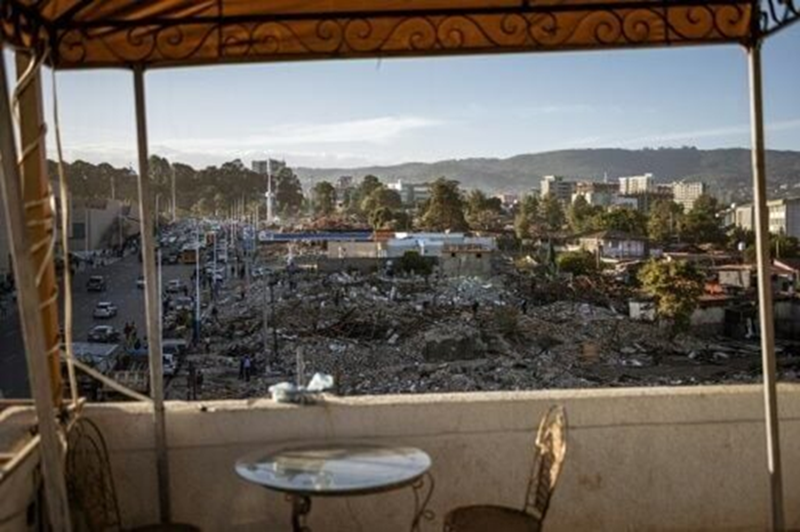April 27, 2024 (GCDC) - In recent weeks, bulldozers have torn down countless buildings in Piassa some dating back a century as part of a modernization drive by the authorities.
Many parts of the vibrant, if somewhat tumbledown, neighborhood have been turned into dusty piles of rubble, and a lot of cherished history has been destroyed, with locals often given little notice to leave their homes or businesses.
Several historical and well-loved sites in the area, from Ethiopia's first Baklava Bakery to Jewelry and Gold shops and bustling cafes, have disappeared.
Critics say the urban renewal scheme known as the Addis Ababa Corridor Development Project has not only wrecked buildings but also the fabric of society in Piassa, where people from all walks of life rubbed shoulders in its cobbled streets.
The Arada district, named "Piazza" by Mussolini's occupying forces in the 1930s, and commonly known as Piassa to this day, was developed around a vast market at the turn of the 20th century.
"Arada was the commercial heart of the Ethiopia of Menelik II," says anthropologist Dominique Harre, referring to the emperor who ruled from 1889 to 1913.
Harre, author of the "Addis Ababa Old Piazza" guidebook, says large trading houses Indian, Armenian, Greek, French, and Ethiopian set up around the market and in the nearby streets.
This cosmopolitan society created a "unique urban" environment with an eclectic mix of architectural influences, she says.
Since the 1920s, warehouses operated by the traders have stood alongside small kiosks and stores, while elegant stone and wood villas owned by wealthy merchants or dignitaries co-existed with more modest homes.
"What is unique in Piassa is that it was built... with African characteristics, contrary to other African capitals" that were built by colonial powers with "colonial urban planning," says architect Piet Nieder.
Nieder, the author of "The Addis Ababa House" about Ethiopia's urban heritage from its founding in 1886 to 1936, says the city has lived through such demolitions and evictions in the past as the sprawling metropolis developed.
"But what is new is the extent of the current destructions. So many households are being destroyed simultaneously."
Since coming to power in 2018, Prime Minister Abiy Ahmed has embarked on several grandiose projects including a new multi-billion-dollar presidential palace in Addis Ababa, and a new museum right on the edge of Piassa.
The large-scale spending has raised eyebrows in a country where, according to the UN, more than 21 million people need aid because of conflict and climate disasters.
The Reporter newspaper, citing official data, said 56 listed buildings in Piassa have already been totally or partly demolished.
Ethiopian Heritage Authority director Abebaw Ayalew insists the body has been closely overseeing the development work to ensure the nation's cultural heritage is unharmed.
But he told reporters: "The age of a building alone does not automatically render it eligible for heritage status".
Addis mayor Adanech Abebe has defended the project, saying it will benefit all of society with the creation of wide roads, bike paths, and children's playgrounds.
"Some areas were falling apart even before we started demolishing them," she said. "We have preserved memories that should be preserved."
Most of the cleared sites in Piassa will be put up for auction, according to the municipal authorities.
Those evicted have complained about the lack of financial compensation and the relocation sites.




